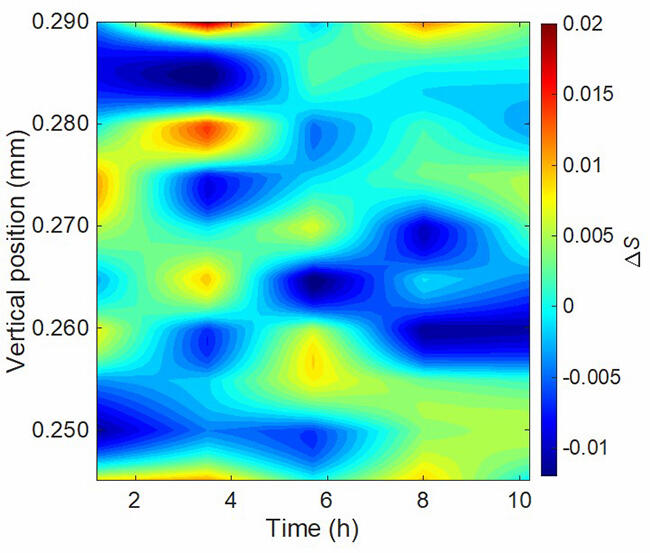International joint research involving Gunma University and Japan Synchrotron Radiation Research Institute (JASRI)
A research group consisting of Kosuke Suzuki, Assistant Professor, Graduate School of Science and Technology, Gunma University; Hiroshi Sakurai, Professor, Graduate School of Science and Technology, Gunma University; and Naruki Tsuji, Researcher, Diffraction and Scattering Division, JASRI; and Yoshiharu Sakurai, Director of the JASRI Center for Synchrotron Radiation Research, were part of an international joint research project with the Lappeenranta University of Technology and the University of Helsinki, in Finland, Carnegie Mellon University, Northeastern University, and Akkurate Oy (a Finnish battery analyzer manufacturer). They succeeded in observing the self-organized patterns of electrode reactions in the positive electrode of a real cylindrical Li-ion cell during charging via Compton scattering experiments using high-brightness, high-energy synchrotron X-ray radiation from SPring-8, a large synchrotron radiation facility. Currently, the electrification of transportation equipment, including cars, is advancing worldwide, thereby necessitating the manufacture of Li-ion batteries with a larger size and higher performance. However, increasing the surface area of Li-ion batteries is known to cause the Li reaction to proceed unevenly across battery electrodes. Because this uneven Li reaction leads to the deterioration of the battery, visualizing Li reactions as they occur during battery use can help to clarify the suppression of these reactions.
The research group performed nondestructive measurements of commercially available cylindrical Li-ion batteries using high-energy synchrotron radiation X-rays, and they observed the self-organized patterns of the Li reactions in their positive electrodes during charging. In the Compton scattering experiments, a 115.56 keV high-energy X-ray generated by SPring-8 was applied to experimental samples (cylindrical Li batteries manufactured by LG Chemical Co., Ltd.). The energy spectra of the X-ray emitted at an angle of 90° directly upward from the sample via Compton scattering was then measured.
A detailed analysis of the obtained Li reaction distribution revealed that the measured S parameters during charging and discharging oscillated with time. Furthermore, extracting the spatial and temporal components of these oscillations revealed the self-organized pattern of the electrode reaction. This self-organized pattern of Li reactions is believed to be related to the charge and discharge rate of the Li-ion battery.
Assistant Professor Suzuki said, "In the future, we intend to investigate the changes in the self-organized pattern caused by varying charge and discharge rates, as well as the optimization of the pattern by using it in conjunction with a mathematical model. We hope to contribute to the development of a Li-ion battery that is highly safe, has a long service lifetime, and can be charged and discharged at high speeds."
■ Self-organization refers to the spontaneous formation of a particular ordered structure in which multiple elements interact with each other.
Examples of typical self-organized patterns include striped patterns of animals and shells.
■ S-parameter analysis method: The S parameter is a parameter that quantifies the change in the line shape of the Compton scattering X-ray spectrum (Compton profile).
The difference in Li content is observed near the center of the Compton scattered X-ray spectrum.
Therefore, the S parameter can be defined by the area ratio of the central area and tail of the Compton scattered X-ray spectrum.

Credit: Gunma University, JASRI.
This article has been translated by JST with permission from The Science News Ltd.(https://sci-news.co.jp/). Unauthorized reproduction of the article and photographs is prohibited.




